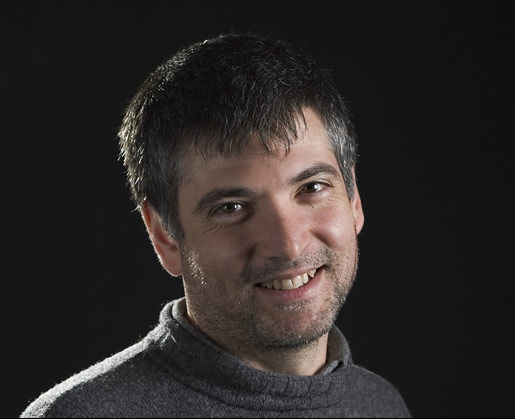
ATLAS e-News
23 February 2011
18 February 2008
Steve Goldfarb
Nationality: American
 Steve Goldfarb
Steve Goldfarb
As happens with many good things in life, Steve Goldfarb came across physics by chance: “When I went to undergraduate school, I was planning to become a medical doctor,” says Steve. The revelation moment happened when he opened an organic chemistry textbook. That was when he realized that what he had found seductive in chemistry were the rules that dictate the order of the chemical elements in the periodic table. “Behind those rules were fascinating physics equations,” he says.
The problem was that, besides fundamentals on chemical elements, there were lots of chemical reactions and formulae to memorize. Steve did not like that bit and soon returned the chemistry compilation to the bookstore and decided to take more courses in maths instead.
With a background in maths, Steve initially aimed at becoming a graduate student in theoretical physics at the University of Michigan, but one day he got a phone call from a professor at the experimental physics department: “We need to send someone to CERN in Switzerland to build a prototype chamber for the L3 experiment on LEP.” Without much hesitation, he thought: “OK, that sounds cool.” Steve enjoyed traveling and he saw the trip to CERN as an opportunity to see new places and live new experiences. But the trip also marked the beginning of a long love affair with experimental physics: “Connecting electronics to that device and seeing cosmic rays going through was great,” he says, “I was sold to the field.”
Steve has been working at CERN for almost 20 years now. And he has no intention to leave: “I will stay at CERN as long as they have work for me,” he says. But probably more important than particle physics, a French wife and two children have kept Goldfarb in the region.
At CERN, he is a research scientist employed, once more, by the University of Michigan to work on ATLAS. He has been involved in software development since his arrival, most recently serving as coordinator for the Muon Spectrometer software for four years and currently involved in database development.
When Steve joined ATLAS in 1998, the Michigan group leader, Prof. Homer Neal, had already been promoting the importance of tools to aid on the communication needs of large collaborations, like ATLAS. Steve soon realized, when he joined the 2,000-member collaboration that these tools were, in fact, essential, both for communication with his own group and with his fellow colleagues working on the project.
Steve’s first project in this field involved the recording of the CERN 1999 Summer Student Programme lectures, to investigate the usage of synchronized web-based recordings. “The project was quite successful. At least the students loved it. So, now we are in the business of recording lots of ATLAS events (plenary weeks, tutorials, etc.)”
More recently, Steve has found himself ramping down his collaborative tool and software activities, in order to spend more time working with his group preparing for data. “My group wants to see me now,” he says, “so I am working on the MDT online database and preparing for physics analysis. Of course, I still work on collaborative tools now in my spare time. As we approach LHC turn on, more and more of our colleagues want to be in communication, so there is a growing need for those tools.”
Now, Steve is looking forward to see the LHC working. He is mostly interested in muon physics. When asked which physics model he is supporting, he says “I would like to be model-independent. I will look for anomalies and let the theorists explain them. What I really want to see is how things expand beyond the standard model”. And ATLAS, which is a general-discovery physics detector, should enable this big step in physics.
Besides physics software and collaborative tools, Steve loves music and is the male lead singer of ‘The Canettes Blues Band’ that plays gigs fairly often in the Geneva area. “I just saw that our web pages are dated from 1998, so I guess now it is officially our tenth anniversary,” he says. Connie Potter, head secretary at ATLAS, sings along with Goldfarb as the female lead singer.
Their repertoire includes a “high-octane” mix of blues and R&B, as well as a few originals. Check the Canettes Home Page and come see their next performance on Friday, April 11, during the next ATLAS Week.
